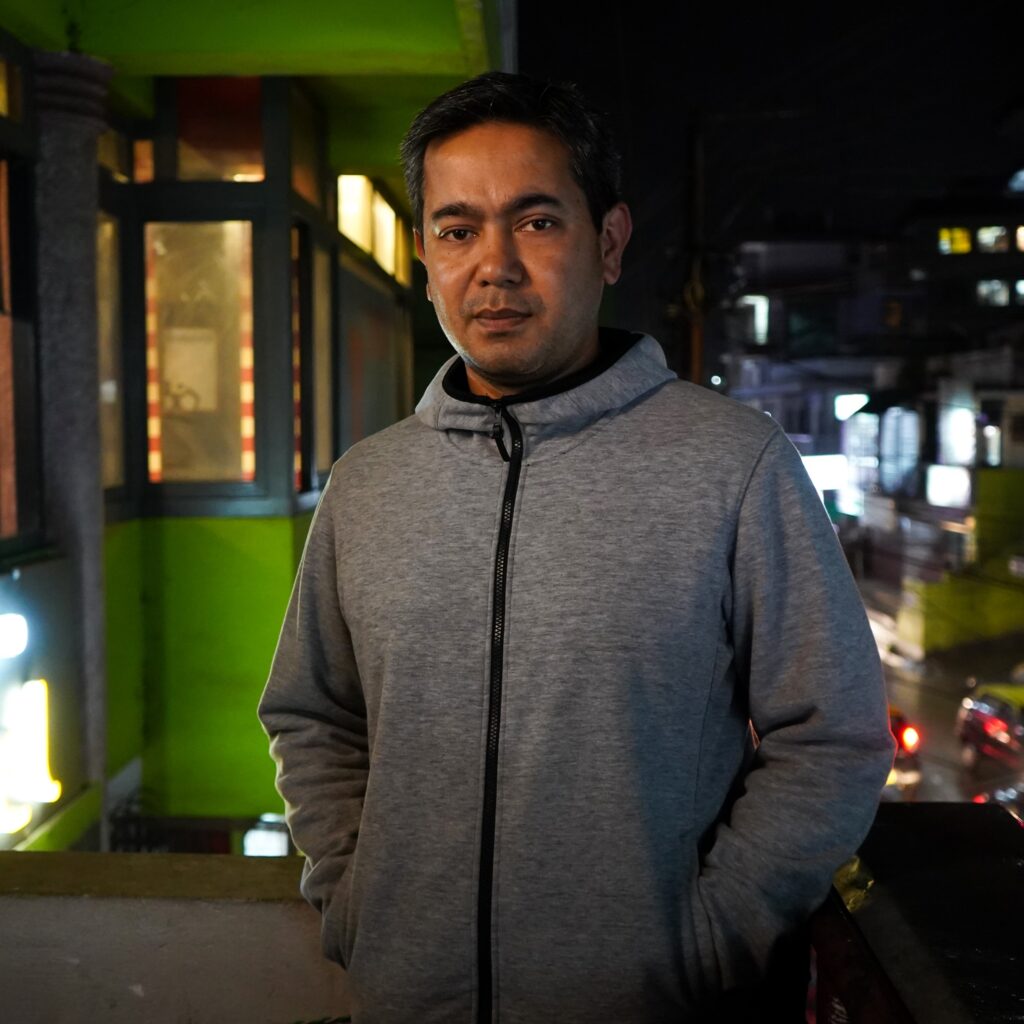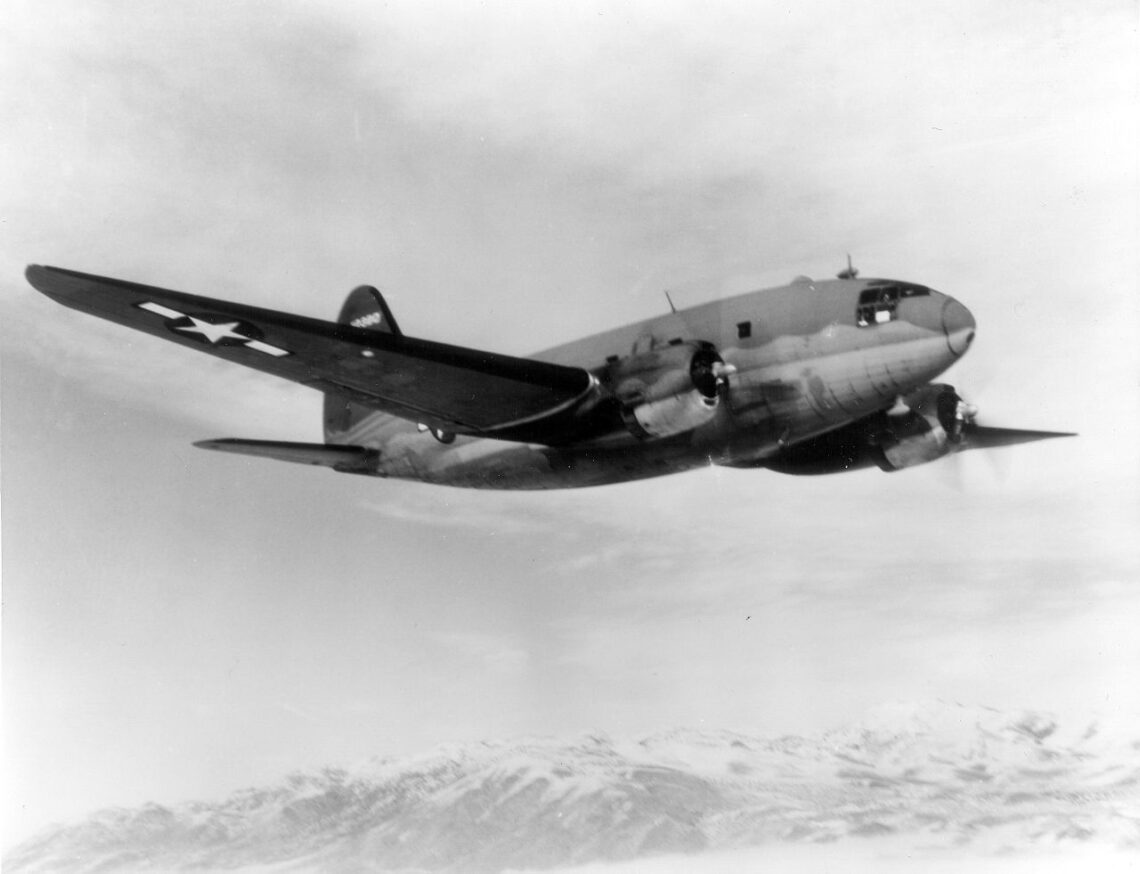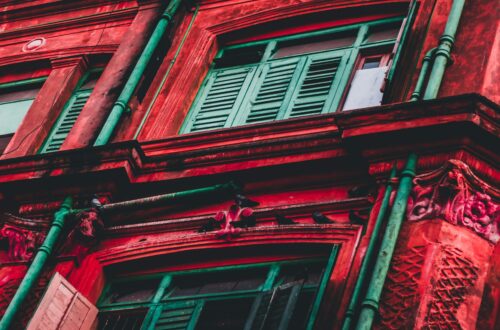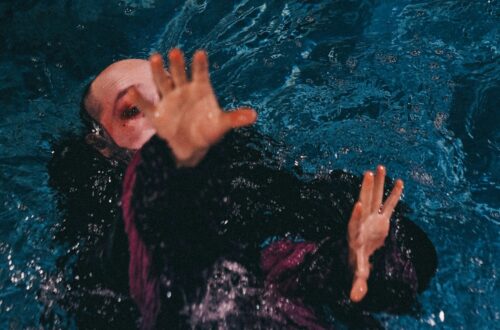Ankush Saikia
As a young boy, Yingpai saw the huge burning bird coming down from the sky on the day the men from his village had gone on a headhunting raid. The silvery bird had streaked across the grey sky, flames and black smoke streaming from its middle, descending in the general direction the men had taken, from where the sun rose every day. He had run back home from the hill he had climbed, to tell his mother about it. Other children and women in the village had seen it too. Later in the day the headhunting party had returned, with several heads, mostly of women and children, but his father was missing. He had been speared and killed after a few men from the opposing village had rushed back from their fields following a brief alarm that had been raised by an old man beating a drum (his head was taken too). For the rest of his life, the burning bird and the death of his father remained inseparably linked in Yingpai’s mind. Death came swiftly in those days, and was accepted as a fact of life. Three out of the eight children Yingpai begat after his marriage were taken very early on from his wife and him. Yingpai remembered stories his father had told him, about elephants and tigers and valiant warriors of old, and in time he passed these on to his surviving children around the fireplace in the interior of their spacious smoke-filled hut, with his mother listening and correcting him at times. The people of the village had found out much later that the bird had come down with a tremendous noise ahead of the village their men had raided that day; no one could travel that far, it was too dangerous, so they only heard stories about the immense wreckage and a new type of iron, very light, that had been stripped off it by people from the next-to-next village and used to make rough utensils and tools. They also learned that the bird was called an airplane. Four bodies had been inside it, charred beyond recognition, metal tags hanging around their necks. In the years to come Yingpai saw a few more of these airplanes, but they sailed clean across the sky, and each time he would remember the day his father hadn’t returned home. Then news filtered through to their village about the army that had come from the east and reached the land of the Meiteis and then the Angamis, where they had clashed mightily with the white men before having to flee in disarray. Yingpai told his five children about his father too, his great bravery, the hunts he had gone on, and the heads he had taken (which hung, shrunken and soot-blackened, on the walls of the hut beside mithun heads and monkey skulls). Why did they take heads, the eldest boy asked. Because that was how it had always been, replied Yingpai. He also told them about the white men their grandfather had encountered, while on a trip to a friendly nearby village. This was several years before Yingpai was born, his mother added. Three men had come up from the plains to the west, from the land of the Ahoms, while another had ridden from the south, from the land of the Angamis and through the land of the Lothas and the Aos, along with escorts in uniform who carried rifles. These men had presented the headman of that village with a sleeveless red coat which signified that he was now the representative of the white men. They had asked him many questions, and the headman also made them speak to Yingpai’s father, saying he had come from another village of the Konyak people. Through an interpreter, and using some broken words of Nagamese in addition to his Konyak, Yingpai’s father answered their questions about headhunting raids as best as he could. They had taken things from the village—skulls, woven cloth, daos—exchanging them for beads and mirrors and coins (the headman had pocketed most of it). They were tall men (except the one who came with the guards, he was shorter), their pale faces mottled in the heat, and they had put their limbs into strange garments. With them was a wooden box with a hole that was placed on stilts, and Yingpai’s father was made to stand still before it outside the headman’s hut for a long while, before one of the white men (who was behind the box with his head cloaked in a black cloth) shouted “done!” which meant he could move. Those men, like the bird called the airplane, came from far-off lands to the west—Yingpai’s father had told him about an island in the seas that was ruled by a queen. He also told him that there had once been a fight between the white men back in their lands, and people from the island had taken some Lothas, Semas and Angamis on huge floating vessels to help them fight the war. That fight must have continued and spread, Yingpai surmised, leading to the airplane appearing along with the armies from the east. But the white man could not be outsmarted. He had come and ruled and wiped out the old ways and spread his religion of the cross. In the end though they had left on their own. By the time the children had grown bigger and were helping their parents in the jhum fields, Yingpai had come to know that their village was now within India—and the village where his father had met his end was now in Burma. This news came after the Naga home guard fighters had appeared, followed later by men from the Indian army. Yingpai saw for the first time a jeep, then people wearing shirts and pants (in the style of the white men), and magazines with photos in them. Traders from the plains brought sugar and soap. The practice of headhunting had started to die out. Yingpai was the first male in his family not to take a head—something he secretly had no wish to do anyway. And then what Yingpai had feared for a long time came to pass: his eldest son joined the Naga army, disappearing for long periods. As a result of this, the second eldest son had been picked up one day along with two other boys from their village and taken to the temporary army camp, from where he never returned. The eldest son came home once after this, wept before his parents, and then never returned as well. Yingpai’s two daughters got married and moved out of the house, leaving only the youngest son to look after their parents. He was a quiet, gentle boy though, unlike his two boisterous older brothers, and he—along with his wife and their three children—looked after Yingpai and his wife well. The couple also got baptised along with their three children, and henceforth a framed illustration of Jesus hung inside their house. After the disappearance of his two sons, Yingpai gradually turned within, and after his wife passed away, he would spend most of his time sitting on a wooden bench outside the hut, sometimes telling his grandchildren old stories he had told them before, more often just thinking about the past, sometimes talking to himself. Around his neck he wore the small brass heads given to them by the government as a sign of their former headhunting days: he wore them in memory of his father. His only surviving son’s eldest child was a boy (two girls had followed him) who was quiet like his father, and who walked a long way every day to a government school where he was soon recognised as one of the more intelligent ones. His parents managed to send him to the nearest town, Mon, after class 6, and after class 10 he made it all the way to Kohima for his college. That was not the end: he then went to Shillong on a government scholarship and managed to earn himself a Master’s degree (in History), after which he got a job in the government service, which saw him posted to a different place within Nagaland every few years. Along the way he got married to a Konyak girl, and they built a house in Mon, and in time both his sons went to Shillong and then Delhi to study. Yingpai meanwhile passed away peacefully in his sleep in his 77th year, in his old house, and his son gave a feast for the village, slaughtering three of the family’s four pigs. Yingpai’s younger grandson later came back to Dimapur where he got a job in a government college—Nagaland by then was getting more funds than ever before from Delhi—while the older grandson, by the name of Anthony, went all the way to Scotland to do his MPhil and then PhD. In this way, each subsequent generation had gone further out into the world. It was on a trip to London, to do some research in a university library there, in connection with his PhD, that Anthony made a strange discovery. In the university’s collection of a colonial officer’s materials from almost a century ago from the Naga Hills region, now kept in large, labelled cardboard boxes in a temperature- and humidity-controlled room, he came across parts of human skulls, a dao or machete, pages of handwritten notes, and a stack of old black-and-white photographs: some taken in the foothills region of Assam (rows of tea bushes, tamed elephants hauling logs, etc.) and the rest in Ao and Konyak territory in the Naga Hills. One faded photo showed a short muscular man in a loin cloth staring fixedly at the camera, his hair cut in a straight fringe above his forehead, and behind him a couple of huts with sloping thatch roofs: Anthony turned over the photo and his heart lurched. There was a date, a village name, and the name of the subject, which he recognised as belonging to his great-grandfather Yingpai’s father. He had heard the story about his great-great-grandfather being made to stand still before a wooden box, which only later did the family learn was something called a camera. The strangeness of it all, while seated in a sterile, carpeted room with the hum of the strip lighting along the ceiling, was like a physical dislocation; for a long time, his mind felt blank. Like Yingpai looking at the immense burning bird sailing down across the sky, it was a moment he would never forget. Later, going through the handwritten notes, Anthony found a paragraph on information given by Yingpai’s father on headhunting raids and crop cultivation (rice and maize). About the photograph, the author had written that “some from the village had been down to the plains, where they had seen photos, and there was a belief among the villagers that the camera sucked out and imprisoned people’s souls, so it was fortunate for us to encounter someone from a further village, whom the headman kindly arranged to be photographed.” About the practice of headhunting, the author had written, “they believe it increases the fertility of their crops; it would seem to be a way to keep the population in check in an area with limited fertile soil…” Anthony made notes in his diary and on his laptop, took photos of the artefacts, and then caught an evening train back to Edinburgh in the company of a fellow student, a girl from Sikkim. In the hushed silence of the coach (most people wore earphones, others were reading or working on their laptops) he recalled a journey many years ago by train from Dimapur to Delhi, a very different experience from his present ride. He decided he would video call his parents over the internet once he got back to his rooms, and tell them about his discovery. There was something else on his mind too: looking out at the silent snow-covered fields of Scotland going past, he wondered how far he had really come from his great-great-grandfather’s time. In years, and in physical distance, it was a long journey, for sure, but, like his great-great-grandfather, wasn’t he a presence—in his university, in the digital realm too—because of what other people had done? Like Yingpai gazing at the burning bird (he had heard of that story too, from the days of World War II, a Dakota transport aircraft flying from Assam over the hump of the Patkai mountains to China), wasn’t he trying to comprehend what other people had done? Camera, airplane. The questions weren’t formulated as precisely as that, but it was what he felt. The notes in his diary before him, the photos of the artefacts on his phone: what did they mean? He turned to look at Dolma sleeping in the seat beside him, tired after a long day. She was pretty and intelligent, and slightly exotic to Anthony with her Buddhist background, and though he liked her, he held back—she came from a well-off family (her father, similar to the rich men in Anthony’s state, was a contractor turned politician from Sikkim), and he was scared of being rejected. He thought getting a teaching fellowship in the UK would help his chances with her. Then, as he turned and looked out into the darkness, he saw what seemed like a huge bird in flames in the night sky hurtling down towards the snowy alien landscape.

Ankush Saikia is based in Shillong, and is the author of nine novels, including the noir crime thriller The Girl From Nongrim Hills, the environmental novel The Forest Beneath the Mountains, the 4-book Arjun Arora series, and the recent e-book Rough Streets. He has also written features and long-form pieces on Northeast India for publications such as Hindustan Times, FountainInk magazine, The Indian Express, Scroll.in and The Hindu. X: @ankushsaikia IG: @ankushsaikia
Featured photo of a Curtiss C-46 Commando Transport Plane from Wikimedia Commons.





